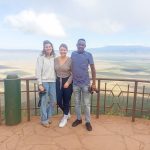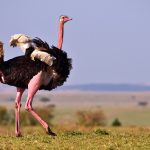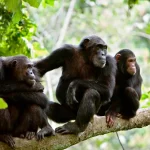
-
Written by : Tarimo Expeditions
- March 9, 2023
Tanzania, located in East Africa, is home to some of the most spectacular wildlife and landscapes on the planet. The country is known for its vast, untouched wilderness areas, where visitors can witness the great migration of wildebeest and zebras, as well as see the famous “big five” animals – lions, elephants, leopards, rhinos, and buffalos. Tanzania’s Northern Circuit is one of the most popular safari destinations in the world, offering visitors the chance to see these animals and much more. In this article, we’ll take a closer look at what makes Tanzania’s Northern Circuit safaris so special.
Introduction
Tanzania’s Northern Circuit is a series of national parks and conservation areas that offer some of the best wildlife viewing opportunities on the African continent. The circuit includes Tarangire National Park, Lake Manyara National Park, Ngorongoro Conservation Area, Serengeti National Park, and Arusha National Park, as well as the iconic Mount Kilimanjaro. Visitors to Tanzania can choose to visit one or all of these destinations, depending on their interests and the length of their stay.
Why Tanzania’s Northern Circuit?
Tanzania’s Northern Circuit is home to some of the most spectacular wildlife in the world. The area is particularly famous for the great migration of wildebeest and zebras, which takes place between the Serengeti and Maasai Mara National Reserves in neighboring Kenya. The Northern Circuit is also home to the “big five” animals – lions, elephants, leopards, rhinos, and buffalos – as well as numerous other species of mammals, birds, and reptiles. In addition to wildlife viewing, the Northern Circuit also offers visitors the chance to experience traditional Maasai culture and explore some of Tanzania’s most stunning landscapes.
When to Visit
The best time to visit Tanzania’s Northern Circuit is during the dry season, which runs from June to October. During this time, wildlife congregates around water sources, making it easier to see them. However, the dry season is also the busiest time of year, and visitors should expect to encounter crowds at popular destinations. The wet season, which runs from November to May, is a quieter time to visit, but wildlife viewing can be more challenging due to the thicker vegetation.
Tarangire National Park
Tarangire National Park is one of Tanzania’s lesser-known national parks, but it’s a hidden gem that should not be missed. The park is famous for its large herds of elephants, as well as its baobab trees, which are among the largest trees in Africa. Visitors to Tarangire can also see lions, leopards, cheetahs, and many other species of mammals and birds.
Lake Manyara National Park
Lake Manyara National Park is located at the base of the Great Rift Valley and is famous for its flamingos and other water birds. The park is also home to a large number of baboons, as well as tree-climbing lions, which are a rare sight in Africa.
Ngorongoro Conservation Area
The Ngorongoro Conservation Area is a UNESCO World Heritage Site and is home to the world-famous Ngorongoro Crater, a massive caldera formed by a collapsed volcano. The crater is home to an incredible diversity of wildlife, including lions, elephants, buffalos, and many other species. Visitors to the Ngorongoro Conservation Area can also visit local Maasai communities and learn about their traditional way of life.
Serengeti National Park
Serengeti National Park is Tanzania’s largest national park and is world-renowned for its role in the great wildebeest migration. Every year, over 1.5 million wildebeest and hundreds of thousands of zebras and gazelles make the journey across the Serengeti plains in search of greener pastures. In addition to the migration, visitors to Serengeti National Park can also see lions, leopards, cheetahs, and many other species of mammals and birds.
Arusha National Park
Arusha National Park is located near the town of Arusha and is one of Tanzania’s smaller national parks. The park is home to Mount Meru, Tanzania’s second-highest mountain, as well as a variety of wildlife, including giraffes, buffalos, and monkeys. Visitors to Arusha National Park can also take a canoe safari on one of the park’s lakes.
Mount Kilimanjaro
Mount Kilimanjaro is the highest mountain in Africa and is located in the Kilimanjaro National Park, which is part of the Northern Circuit. Climbing Mount Kilimanjaro is a popular activity for visitors to Tanzania, but it requires careful planning and preparation. There are several different routes to the summit, ranging in difficulty from relatively easy to very challenging.
Accommodations
There are a wide variety of accommodations available in Tanzania’s Northern Circuit, ranging from luxury lodges to budget-friendly campsites. Many of the lodges and campsites are located inside the national parks and conservation areas, offering visitors the chance to experience the wilderness up close. Visitors can also choose to stay in the nearby towns and villages and take day trips to the national parks.
Planning Your Trip
Planning a trip to Tanzania’s Northern Circuit can be overwhelming, as there are so many different destinations and activities to choose from. It’s a good idea to work with a reputable tour operator who can help you plan you’re itinerary and make all of the necessary arrangements. Visitors should also be prepared for long drives between destinations and should bring appropriate clothing and gear for the activities they plan to do.
Safety Tips
Tanzania is generally a safe country for visitors, but there are some precautions that should be taken. Visitors should always follow the advice of their tour guide or park ranger and should never approach or attempt to touch wild animals. Visitors should also be aware of the risk of malaria and take appropriate measures to prevent mosquito bites.
Conclusion
Tanzania’s Northern Circuit safaris offer visitors the chance to experience some of the most spectacular wildlife and landscapes on the planet. From the great wildebeest migration in Serengeti National Park to the stunning Ngorongoro Crater, there is something for everyone in this incredible destination. With careful planning and preparation, visitors can make the most of their trip and create memories that will last a lifetime.
FAQs
Is Tanzania’s Northern Circuit suitable for families with children?
Yes, there are many family-friendly accommodations and activities available in the Northern Circuit.Do I need a visa to visit Tanzania?
Yes, visitors to Tanzania need a visa. It’s recommended to obtain a visa prior to arrival, but it’s also possible to obtain one on arrival at the airport.- When is the best time to visit Tanzania’s Northern Circuit?
The best time to visit depends on your specific interests. The dry season (June-October) is generally considered the best time for wildlife viewing, but the wet season (November-May) offers lush landscapes and fewer crowds. - Is it safe to climb Mount Kilimanjaro?
Climbing Mount Kilimanjaro can be dangerous if proper precautions are not taken. Visitors should always climb with a reputable tour operator and follow the advice of their guide. - What should I wear on safari in Tanzania’s Northern Circuit?
Visitors should wear comfortable, lightweight clothing that is appropriate for the weather and activities. Neutral colors are recommended, and it’s important to bring sunscreen, a hat, and sunglasses.
Best of Our Tanzania Safaris
From the Wildebeest Migration to the Big 5 and Tropical White Sand Beaches
Explore the best of Tanzania with our curated collection of safaris packages. Experience breathtaking wildlife, stunning landscapes and cultural richness, there’s something for everyone.







